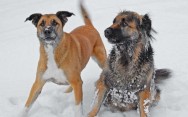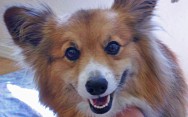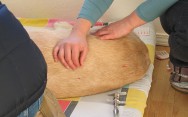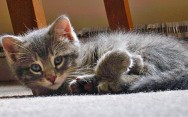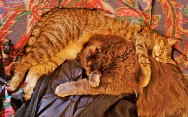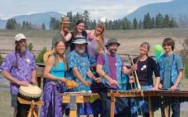CHIROPRACTIC TREATMENTS AND BENEFITS
Canine agility athletes are wonderful candidates for chiropractic, and we have some champions among our patients that regularly get a “tune-up” adjustment in the weeks prior to an event. Chiropractic care works very well in concert with acupuncture. Follow-up visits may be recommended in a week or two, depending on the animal’s condition, though one nice thing about animals is that they tend to maintain their adjustments longer than people do.
Some history and explanation of how this works:
The origins of chiropractic care in humans can be traced back to the time of Hippocrates, who wrote “Get knowledge of the spine, for this is the requisite for many diseases.” Modern history of chiropractic in the U.S. dates to 1895, and the application of this care to veterinary patients became formalized in the late 1980’s with the formation of the American Veterinary Chiropractic Association.
Chiropractic medicine involves maintaining a healthy relationship between the spinal column, including all of its articulations, and the nervous system. The purpose of a chiropractic adjustment is to restore normal motion and function to the spine, which contributes to the restoration and maintenance of health of the individual. There are over 100 articulations, or joints, between the base of an animal’s skull and its tail. Facet joints are located on either side of each vertebra, one set articulating with the vertebra ahead of it, and one set with the vertebra behind it. A facet joint that becomes “stuck,” not moving correctly, will cause its joint capsule to become inflamed and swollen. Even a little swelling of that joint capsule then impinges on the intervertebral foramen, an opening that allows passage of a number of structures from inside to outside the spinal canal, including the spinal nerves and the blood vessels that supply them. A veterinary chiropractic practitioner identifies those affected joints by motion palpation. This technique measures the mobility of each vertebra in relation to the one adjacent to it, and identifies those facet joints that are in need of adjustment. The adjustment is a quick thrust on a specific contact point on a bone, delivering a force through the plane of the joint that has become “stuck”. This is sometimes surprising to the animal, but generally not uncomfortable.
All sizes of animals can be adjusted using this technique. Dogs and cats are the most frequent visitors to our practice. They are sometimes adjusted using a small instrument called an Activator, which uses a spring to apply a faster thrust with a smaller mass. This allows for easier specific adjustments on very small bones. Horses’ vertebrae are only about the size of a fist, and the adjustment is made with the practitioner’s hands on only one vertebra at a time. In both small and large animals, the importance of knowing the correct angle and direction of thrust is paramount in being sure that the joint is mobilized and not jammed. Long lever techniques and hammers or mallets are not necessary and can be dangerous if excessive force is applied.
Reduced mobility of the spine results in dysfunction of the nerves that come off the spinal cord and exit through the intervertebral foramen. The causes of this are many, as are the effects.
As with the practice of acupuncture, chiropractic care focuses on the innate ability of the body to heal itself, and strives to remove obstacles to that process. At Calm Animal Care we feel these practices work in conjunction with and not as a replacement for regular veterinary examinations and care as indicated by each individual case.
Acupuncture FAQ'sAcupuncture in more detail


